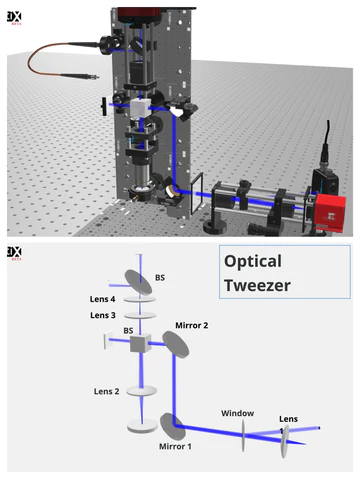In today’s fast-paced world of optical design and manufacturing, efficiency and accuracy are paramount. Traditional methods of design validation can be time-consuming, error-prone, and ultimately costly. That’s where cutting-edge optical design validation tools come into play, streamlining workflows and propelling the industry forward with unprecedented speed and precision.
The Optical Design Validation Bottleneck
Historically, validating optical designs has been a labor-intensive process that often involves multiple rounds of prototyping, testing, and refinement. This iterative cycle can be both time-consuming and resource-intensive, slowing down product development cycles and hindering innovation. Moreover, traditional validation methods rely heavily on physical prototypes, which can be expensive to produce and may not accurately reflect the final product’s performance.
The Rise of Optical Design Validation Tools
Enter optical design validation tools, a game-changing technology that leverages advanced computational power and sophisticated algorithms to simulate and analyze optical systems virtually. These tools allow designers to thoroughly evaluate their designs before committing to physical prototyping, saving valuable time and resources while ensuring optimal performance and functionality.
Streamlining Workflows: The Key Benefits
By incorporating cutting-edge optical design validation tools into their workflows, organizations can realize a multitude of benefits that directly impact their bottom line and competitive edge. Let’s explore some of the key advantages:
Accelerated Design Cycles
One of the most significant benefits of optical design validation tools is their ability to drastically reduce the time required for design iteration and validation. By eliminating the need for extensive physical prototyping and testing, designers can rapidly evaluate and refine their designs in a virtual environment, leading to faster time-to-market and increased innovation cycles.
Cost Savings and Resource Optimization
Traditional prototyping and testing methods can be incredibly expensive, particularly when dealing with complex optical systems or high-precision components. Optical design validation tools minimize these costs by enabling thorough virtual testing and analysis, reducing the need for physical prototypes and associated manufacturing expenses. Furthermore, by optimizing resource allocation, organizations can reallocate funds and personnel towards other critical areas, boosting overall efficiency and productivity.
Enhanced Design Accuracy and Quality
Optical design validation tools leverage advanced computational algorithms and simulation techniques to accurately model and analyze optical systems with unprecedented precision. This high level of accuracy enables designers to identify and address potential issues early in the design process, reducing the risk of costly mistakes or performance-related issues down the line. By ensuring optimal design quality from the outset, organizations can deliver superior products that meet or exceed customer expectations.
Seamless Collaboration and Knowledge Sharing
In today’s globally interconnected world, optical design projects often involve teams spanning multiple locations and time zones. Optical design validation tools facilitate seamless collaboration and knowledge sharing by providing a centralized platform for design evaluation, review, and iteration. Team members can access and analyze designs from anywhere, fostering efficient communication and leveraging collective expertise to drive innovation.
Embracing the Future of Optical Design
As the demand for cutting-edge optical solutions continues to grow across various industries, from consumer electronics to scientific instrumentation and healthcare, the need for efficient and accurate design validation tools becomes increasingly crucial. By adopting these advanced technologies, organizations can stay ahead of the curve, streamlining their workflows and positioning themselves as leaders in their respective fields.
Whether you’re a seasoned optical designer or an innovative startup pushing the boundaries of optical technology, embracing cutting-edge optical design validation tools is a strategic investment in your organization’s future success. By leveraging the power of virtual simulation and analysis, you can accelerate design cycles, optimize resource allocation, enhance product quality, and foster seamless collaboration – all while driving innovation and staying competitive in an ever-evolving market.
So, don’t let traditional bottlenecks hold you back. Embrace the cutting edge of optical design validation and unlock a world of streamlined workflows, unparalleled efficiency, and game-changing innovation.










